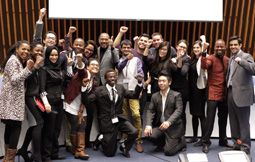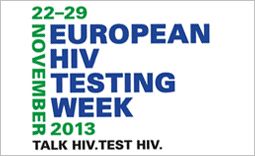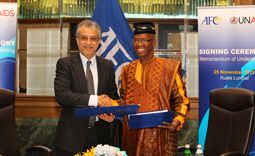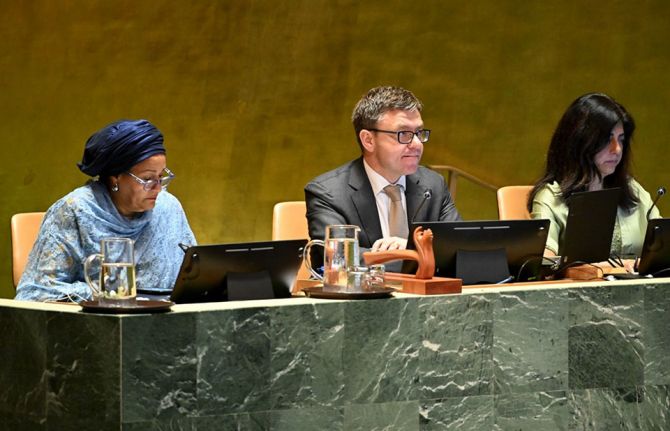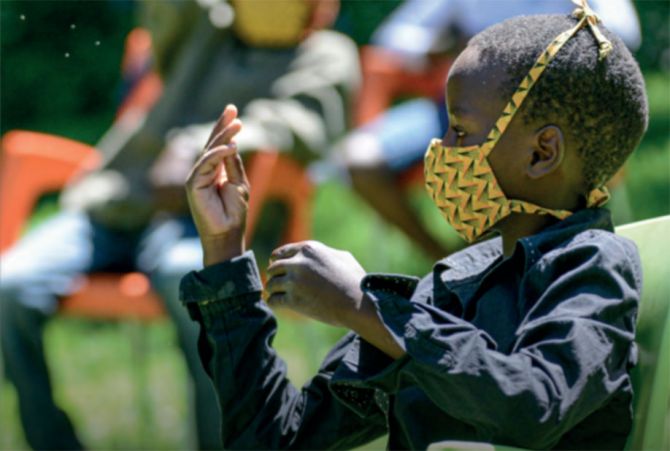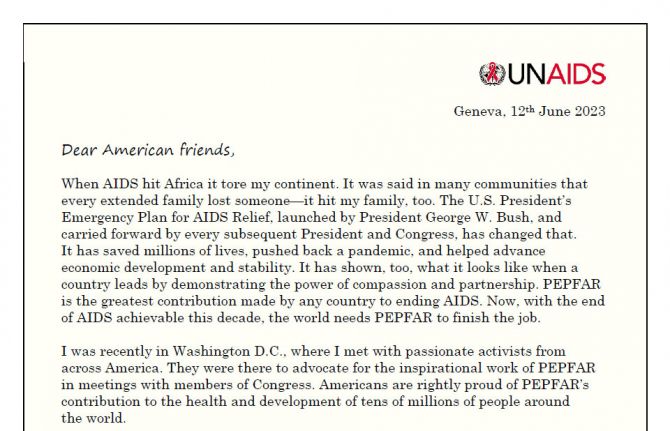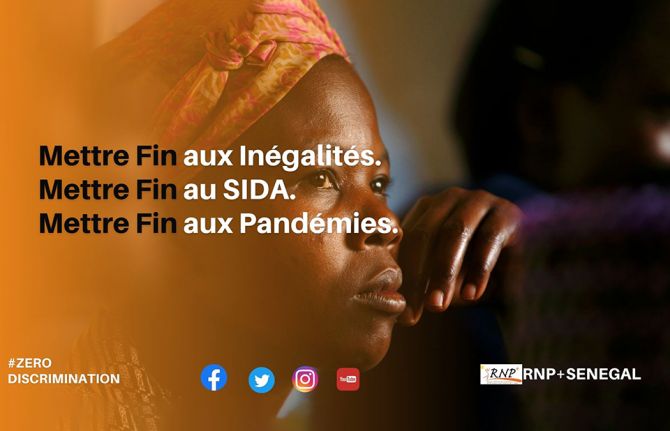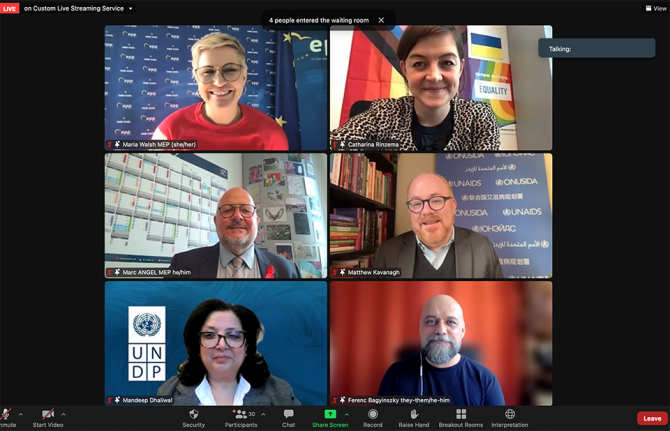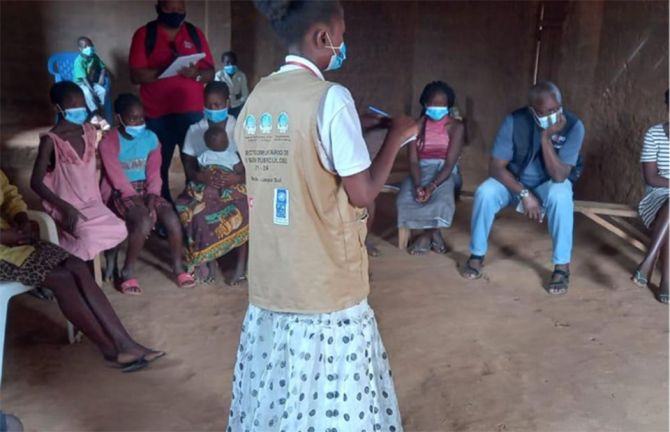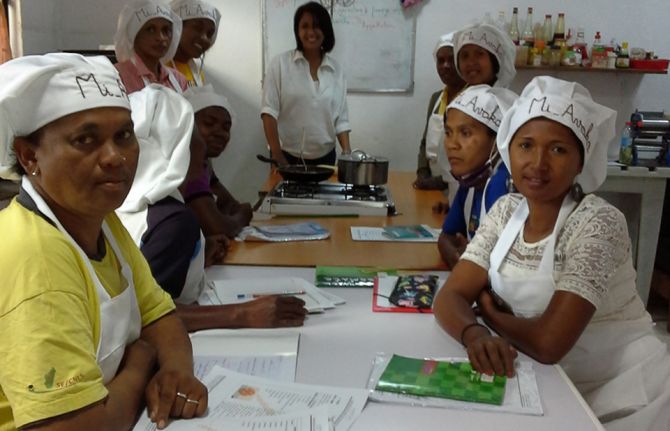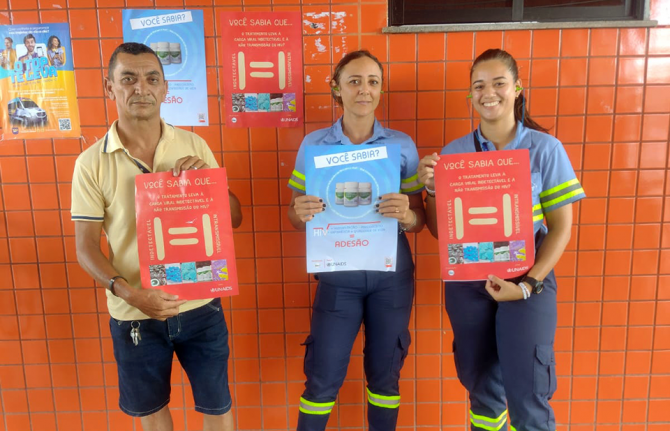
Feature Story
Tirer les leçons de l’expérience
19 janvier 2007
19 janvier 2007 19 janvier 2007
Photos : UNAIDS/K.Hesse
Il existe littéralement des milliers de programmes autour du sida dans le monde. Etant donné la diversité des approches et des méthodologies, le partage de l’information relative aux initiatives qui se sont révélées efficaces est essentiel pour le développement et l’amélioration des programmes de lutte contre le sida.
Pour contribuer à faire avancer ce processus de partage des connaissances, l’ONUSIDA a mis en place en 1997 la ‘Collection des Meilleures Pratiques’, série de publications comprenant des directives, des actualisations et des documents de politiques, ainsi que des études de cas, des manuels et des examens de problèmes particuliers et de leurs solutions, en vue d’encourager l’apprentissage, le partage des connaissances et de donner les moyens nécessaires aux personnes et partenaires de la riposte au sida.
« Savoir ce qui marche et ce qui ne marche pas, dans quelles circonstances ou contraintes culturelles, peut contribuer au développement des programmes de lutte contre le sida aujourd’hui et demain, » affirme Alistair Craik, responsable de la Collection. « La Collection des Meilleures Pratiques offre une profusion d’expériences pratiques utiles et reproductibles. »
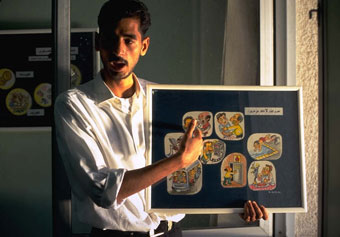
Photos : UNAIDS/G.Pirozzi
La Collection de l’ONUSIDA apporte des exemples de programmes du monde entier qui ont été efficaces et que l’on a choisis pour inspirer les responsables des politiques, les directeurs de programmes et autres parties intéressées de la riposte au sida.
La Collection comporte actuellement près de 140 titres en anglais, dont une centaine est également disponible en français, 75 en espagnol et 50 en russe. Les examens externes réalisés en 1999 et à nouveau en 2003 ont montré que la Collection des Meilleures Pratiques de l’ONUSIDA était une source très respectée d’information pour les personnes qui œuvrent dans le domaine du sida, notamment les organisations non gouvernementales, les ministères de la santé et les communautés.
« La Collection présente plusieurs approches peu conventionnelles, par exemple, la collaboration avec les guérisseurs traditionnels. Ces exemples de ‘meilleure pratique’ peuvent aider les gens à appliquer à la lutte contre l’épidémie des moyens novateurs et efficaces auxquels ils n’avaient jusqu’alors pas songé, » ajoute-t-il.
La Collection de l’ONUSIDA couvre tout un éventail de domaines, qui va des programmes relatifs au VIH sur les lieux de travail à la prévention parmi les consommateurs de drogues injectables et des programmes axés sur les hommes ayant des rapports sexuels avec des hommes aux ripostes au sida des organisations à assise confessionnelle.
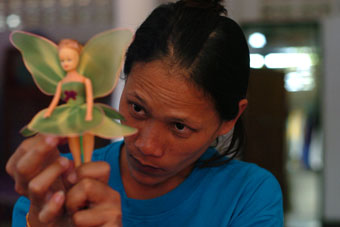
Photos : UNAIDS/O.O'Hanlon
Les suggestions pour de nouvelles publications de la Collection arrivent de sources diverses, dont des personnes participant à la riposte ou des décideurs politiques et programmatiques à l’échelon local, national et international.
L’ONUSIDA travaille aussi en collaboration étroite avec ses 10 Coparrainants pour améliorer l’information relative au VIH dans leur domaine de compétences. L’ONUSIDA a collaboré avec le HCR et l’OIT pour produire deux publications axées sur les programmes VIH dans les camps de réfugiés et sur les lieux de travail.
Pour être considéré comme une ‘meilleure pratique’ susceptible d’entrer dans la Collection de l’ONUSIDA, un programme doit remplir plusieurs conditions fondamentales. Tout d’abord, le programme doit être solide sur le plan éthique. Il doit aussi être pertinent, efficace sur le plan financier, viable et reproductible. Les publications de la Collection sont examinées par des experts au sein de l’ONUSIDA ou d’autres organisations du système des Nations Unies.
« Nous distribuons gratuitement des exemplaires des nouveaux titres aux personnes participant à la riposte au sida dans les pays à revenu faible et intermédiaire. Les textes complets sont également disponibles sur le site web de l’ONUSIDA, » ajoute encore Craik.
Au cours de ces prochains mois, l’ONUSIDA présentera sur son site web certains des programmes figurant dans la Collection des Meilleures Pratiques.
Liens:
Voir la Collection des Meilleures Pratiques
Related

Feature Story
Sida : faire passer le message
17 janvier 2007
17 janvier 2007 17 janvier 2007
Un couple s’embrasse sur un escalier – la légende « s’embrasser » glisse sur l’écran de la télévision. Une femme enceinte touche son ventre avec tendresse et le texte « aimer » apparaît en surimpression. Des femmes, des hommes, des garçons, des filles, des amants, des familles – ils sont tous représentés dans un spot télévisé de 30 secondes destiné à faire passer des messages sur le sida sur le thème « toujours, protégez-vous et protégez ceux que vous aimez ».
Ce message de sensibilisation venu d’Argentine et produit en 2004 n’est qu’un exemple parmi les quelque 200 spots télévisés réunis dans une anthologie spéciale sur DVD marquant 10 années de messages d’intérêt public dans la région des Amériques, produite par l’Organisation panaméricaine de la Santé (OPS).

Ce double DVD, intitulé “VIHdeo America”, présente des spots produits entre 1995 et 2005 en vue de partager des informations, des récits et des expériences liés à l’usage de la télévision dans les campagnes sur le VIH et de contribuer à encourager de nouvelles approches en matière de communication sur le sida.
De l’Argentine au Venezuela, du Chili à l’Uruguay, la compilation comprend des exemples de 24 pays et elle est en premier lieu destinée aux personnes qui s’occupent de communication dans le domaine du sida. Dans un aide-mémoire spécial qui accompagne les DVD, les producteurs notent qu’ils espèrent que cette compilation aidera les communicateurs de toute la région à analyser et évaluer tout ce qui a été produit au cours des 10 dernières années, afin d’améliorer encore les campagnes futures à la télévision.

« Dans notre région, les pays organisent pratiquement chaque année des campagnes de lutte contre le VIH dans les médias. Des affiches et des brochures circulent parfois, mais les spots télévisés traversent rarement les frontières car la télévision n’est généralement diffusée que sur le territoire national. Les pays voisins n’ont souvent aucune idée de ce que d’autres pays ont élaboré pour la télévision. ‘VIHdeo America’ contribue à rompre ce silence, » explique Paulo Lyra de l’OPS, qui a participé à la production des DVD. « La télévision est un médium très coûteux, notamment dans les pays qui doivent payer leur temps d’antenne. Il est donc impératif d’apprendre à en faire le meilleur usage possible pour communiquer sur le sida à l’avenir, » ajoute-t-il. Les producteurs de VIHdeo America notent que l’anthologie n’a pas pour but de devenir une vitrine des meilleures pratiques et ils soulignent même qu’une analyse critique des spots, notamment certaines des premières productions, est absolument nécessaire pour garantir que les messages d’intérêt public sur le VIH à la télévision sont bénéfiques plutôt que néfastes.
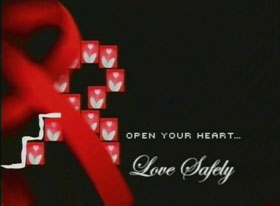
« Si la communication peut avoir un effet positif, elle peut aussi alimenter la stigmatisation et la discrimination. Par exemple, certains des plus anciens spots font appel à la peur ou semblent montrer du doigt les ‘groupes vulnérables’. Nous devons faire preuve d’esprit critique pour déterminer si les spots plus récents ont renoncé à cette tradition et, en se fondant sur ces expériences, comment nous pouvons faire en sorte que les annonces à venir combattent la discrimination et parviennent aux personnes qui en ont le plus besoin, » explique Lyra.
Avec des titres tels que ‘Love Safely’ (Aimez en toute sécurité), ‘Welcome to Condom Country’ (Bienvenue au pays du préservatif) et ‘Know AIDS-NO AIDS’ (Connaître le sida = pas de sida) les clips contenus dans l’anthologie présentent toute une palette de scénarios et de situations. Tous les spots sont sous-titrés en anglais et en espagnol. Certains sont très sérieux, d’autres s’appuient sur l’humour pour faire passer leur message. « Le Brésil, par exemple, a produit une série hilarante intitulée ‘Braulio’ qui dépeint un homme qui converse avec son pénis. Il date de 1995 et était, pour l’époque, tout à fait révolutionnaire. Mais ils l’ont fait et c’est devenu un exemple de ce que peuvent accomplir les communicateurs sida pour élargir leurs horizons, » conclut Lyra.
“La communication peut être un outil très efficace dans la riposte au sida. L’analyse de ce qui a ou non fonctionné ces dernières années peut aider les communicateurs à trouver des moyens plus importants et plus efficaces de faire passer les bons messages, » déclare Annemarie Hou, Chef des Affaires publiques et de la Communication à l’ONUSIDA.
Le DVD “VIHdeo America” peut être obtenu auprès de l’Organisation panaméricaine de la Santé. Pour d’autres renseignements, veuillez consulter le site www.paho.org/vihdeoamerica (en anglais et espagnol)
Photos: vihdeoamericas/PAHO
Related
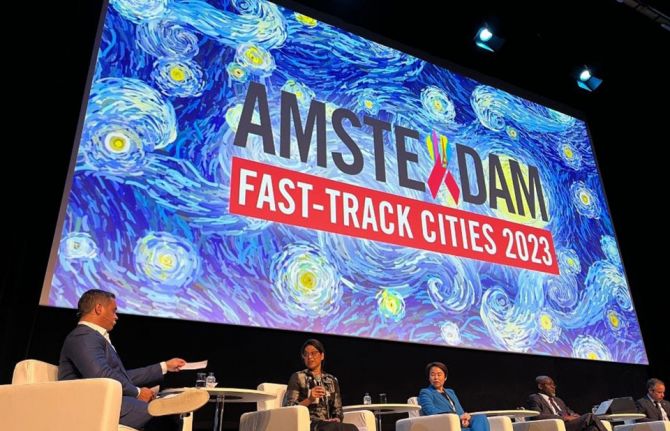 Cities leading the way to achieving key targets in the HIV response
Cities leading the way to achieving key targets in the HIV response

27 septembre 2023

Feature Story
Des signes de progrès dans la riposte mondiale au sida chez l’enfant
16 janvier 2007
16 janvier 2007 16 janvier 2007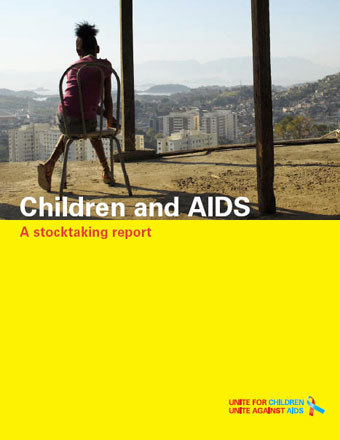
Photo: UNICEF
Il y a un peu plus d’un an, l’UNICEF, l’ONUSIDA et d’autres partenaires lançaient l’initiative Unissons-nous pour les enfants, contre le sida pour faire connaître la face cachée de l’épidémie de sida, les enfants.
Mardi 16 janvier 2007, l’UNICEF a publié un rapport intitulé ‘Enfants et sida : Un bilan de la situation’, qui résume les progrès réalisés dans ce domaine depuis le lancement de l’initiative en octobre 2005 et relève les faits marquants et les avancées observés dans la riposte mondiale au sida chez les enfants depuis le lancement de la campagne. Certains pays ont obtenu des résultats remarquables dans la prévention de la transmission du VIH de la mère à l'enfant et la prestation de soins aux enfants vivant avec le sida.
“Il est urgent d'aider les enfants affectés par le sida, a déclaré mardi Mme Ann M. Veneman, Directrice générale de l'UNICEF. La campagne Unissons-nous pour les enfants, contre le sida a pour mission de procurer un traitement aux enfants séropositifs, de prévenir la transmission de la mère à l'enfant et d'aider les enfants rendus orphelins par le sida. Nous devons accélérer le mouvement pour obtenir des résultats positifs en faveur des enfants.”
Le rapport de l’UNICEF présente des données dans quatre domaines clés : prévention de la transmission mère-enfant, accès aux traitements du sida, prévention des nouvelles infections à VIH et appui aux orphelins et aux enfants vulnérables.
Prévention de la transmission mère-enfant
Le rapport atteste de progrès considérables dans le domaine de la prévention de la transmission du VIH de la mère à l’enfant. Des pays à forte prévalence en Afrique orientale et australe montrent des résultats particulièrement encourageants. En Namibie par exemple, le pourcentage de femmes enceintes séropositives au VIH bénéficiant d’un traitement pour empêcher la transmission du virus au bébé est passé de 6% en 2004 à 29% en 2005. En Afrique du Sud, ce pourcentage est passé de 22% en 2004 à 30% en 2005.
En dépit de ces progrès, le rapport relève que le pourcentage total de femmes enceintes bénéficiant d’un traitement pour la prévention de la transmission reste extrêmement bas. En 2005, on estime que 9% seulement des femmes enceintes séropositives au VIH vivant dans des pays à revenu faible ou intermédiaire recevaient un traitement pour empêcher la transmission du virus à leur bébé.
Accès aux traitements du sida
Le rapport relève une accélération notable dans la fourniture de traitements pédiatriques, ce qu'on peut attribuer à un meilleur dépistage, une amélioration des compétences du personnel soignant, une baisse du prix des médicaments et une simplification des posologies. Plusieurs pays, dont l'Afrique du Sud, le Botswana, l'Inde, le Rwanda et la Thaïlande, ont été en mesure de soigner un plus grand nombre d'enfants séropositifs en les intégrant à des sites de traitement pour adultes.
A l'échelle mondiale, on ne compte encore que 10% des enfants sous traitement antirétroviral parmi ceux qui en ont besoin. Pourtant, le prix des antirétroviraux pédiatriques a connu une baisse spectaculaire au cours des 12 à 18 derniers mois. Le rapport note que, en 2006, l'Initiative VIH/sida de la Fondation Clinton a négocié une réduction du coût de ces médicaments qui reviennent maintenant à moins de 0,16 dollar par jour ou 60 dollars par an, ce qui a encouragé la concurrence dans le domaine du développement de formules pédiatriques.
Prévenir de nouvelles infections
Le rapport indique que les activités de prévention du VIH prennent à nouveau en compte le besoin de cibler les stratégies sur les adolescents et les jeunes les plus exposés au risque. Il note en particulier que les jeunes femmes devraient faire l’objet d’une attention particulière, car à l'échelle mondiale, le nombre de jeunes femmes infectées dépasse celui des hommes.
De nouvelles données suggèrent que si la prévalence est en baisse au Kenya, dans les zones urbaines de Côte d'Ivoire, du Malawi et du Zimbabwe, ainsi que dans les zones rurales du Botswana, c'est parce que les jeunes semblent adopter des comportements sexuels plus sûrs. Dans plus de 70 des pays inclus dans l'étude, le recours aux services de conseil et de test a augmenté, environ 16,5 millions d'individus y ayant fait appel en 2005 contre seulement 4 millions en 2001.
Soutien aux orphelins et autres enfants vulnérables
En ce qui concerne l'accès à l'éducation, la disparité entre orphelins et non-orphelins s'est réduite de façon significative dans plusieurs pays, en partie grâce à l'abolition des frais de scolarité, estime le rapport.
Ce dernier relève que le recueil et la ventilation des données par groupes d'âge et par sexe est l'un des moyens les plus importants, les plus simples et les plus efficaces d'inclure les enfants dans les programmes de lutte contre le sida. Le rapport se sert pour la première fois de données de base qui serviront de point de départ pour évaluer les données, nouvelles ou existantes, afin de repérer les tendances discernables concernant les enfants et le sida.
Liens:
Lire le Rapport ‘Bilan de la situation’ (pdf, 3,49 Kb) (en anglais)
Lire 'Prévenir la transmission mère-enfant' - Aide-Mémoire (pdf, 37,8 Kb) (en anglais)
Lire 'Fournir des traitements pédiatriques' - Aide-Mémoire (pdf, 37,9 Kb) (en anglais)
Lire 'Prévenir l’infection parmi les adolescents et les jeunes’ - Aide-Mémoire (pdf, 38,1 Kb) (en anglais)
Lire 'Protéger et soutenir les enfants affectés par le sida' - Aide-Mémoire (pdf, 40,1 Kb) (en anglais)
En savoir davantage sur la campagne "Unissons-nous pour les enfants, contre le sida" (pdf, 1,41 Mb) (en anglais)
Visiter le site "Unisson-nous pour les enfants, unissons-nous contre le sida" (en anglais)

Feature Story
Session extraordinaire du sommet de l’ANASE sur le sida
13 janvier 2007
13 janvier 2007 13 janvier 2007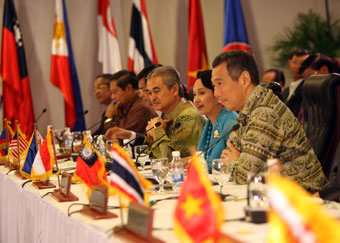
Photo: J.Carual-PCPO
« Le sida n’est pas une tempête passagère, mais une menace à long terme pour le développement et la sécurité nationale en Asie, » souligne le Programme commun des Nations Unies sur le VIH/sida (ONUSIDA) dans un rapport soumis le samedi 13 janvier à l’occasion de la ‘Session extraordinaire sur le VIH/sida’ du 12e Sommet de l’Association des Nations de l’Asie du Sud-Est (ANASE).
Un rapport spécial émanant du Directeur exécutif de l’ONUSIDA, le Dr Peter Piot, sur la situation des épidémies de sida à travers le monde et dans la région de l’ANASE, ainsi que sur les défis auxquels sont confrontés les pays, a été présenté aux chefs d’Etat des 10 pays de l’ANASE en vue de la Session extraordinaire. C’est la première fois qu’un organe externe est invité à donner une information au Sommet des chefs d’Etat sur le sida.
L'Asie se situe au deuxième rang mondial pour ce qui est du nombre de personnes vivant avec le VIH et sa part de l'épidémie mondiale est en augmentation. Selon les estimations récentes, la région de l'ANASE – qui comprend le Brunei Darussalam, le Cambodge, l'Indonésie, la Malaisie, le Myanmar, les Philippines, la République démocratique populaire lao, Singapour, la Thaïlande et le Viet Nam – connaît l'épidémie la plus grave de l'Asie. On estime qu’en 2006, 1,6 million de personnes vivaient avec le VIH dans la région de l'ANASE et dans certains pays, 1,5% au moins de tous les adultes vivent avec le VIH.
Le rapport de l'ONUSIDA souligne que « Nous en sommes encore dans les premières phases de l'épidémie en Asie et nous devons redoubler d'efforts et les maintenir – ne pas baisser la garde. Le fait le plus inquiétant pour les pays de l’ANASE, c’est que le sida affecte les segments les plus productifs des populations, c’est-à-dire les travailleurs et les travailleuses qui représentent les forces vives du développement économique de la région, » note le rapport.
Affirmant que le sida est ‘l’un des enjeux les plus déterminants de notre temps’, le rapport de l’ONUSIDA souligne la menace que constitue le sida pour la réalisation de presque tous les objectifs du Millénaire pour le développement dans la région. L’ONUSIDA a toutefois déclaré qu’il y avait des opportunités de mettre en place une riposte à l’épidémie sur le long terme.
La participation significative des organisations à assise communautaire et de la société civile – en particulier les personnes vivant avec le VIH – dans les ripostes nationales au sida doit également représenter une priorité. L’importance du leadership personnel des chefs d’Etat en matière de sida a été soulignée. « La menace du sida ne s’éloignera pas dans un an ou dans cinq ans. [L’ONUSIDA] et le monde se tournent vers vous, pour demander votre leadership continu sur le sida, » déclarait le rapport.
Le rapport faisait état des progrès marquants réalisés par un certain nombre de pays de la région pour s’assurer que les communautés les plus vulnérables, notamment les jeunes, les professionnel(le)s du sexe et leurs clients, les hommes qui ont des rapports sexuels avec des hommes et les consommateurs de drogues injectables, soient prioritaires dans les ripostes nationales au sida. A court terme, il faut de toute urgence accroître la portée et la taille des programmes visant à atteindre les personnes les plus exposées au risque d’infection dans la région. Parallèlement, ces programmes doivent prendre en considération les moteurs des épidémies au sein des pays, tels que les inégalités entre les sexes, l’homophobie et la stigmatisation liée au VIH.
La Session extraordinaire 2007 de l'ANASE sur le sida a été organisée en application d’une résolution passée au 7 ème Sommet de l'ANASE, tenu au Brunei Darussalam en novembre 2001 au cours duquel les chefs d'Etat et de gouvernement de l'ANASE avaient convenu d'organiser une « Session extraordinaire sur le VIH et le sida » en parallèle avec le 12 ème Sommet de l'ANASE en 2007, afin de démontrer l'engagement de l'ANASE dans la lutte contre le sida et d'encourager les ripostes régionales à prendre des mesures urgentes.
Le Directeur exécutif de l'ONUSIDA, le Dr Peter Piot , et le Directeur exécutif adjoint de l'ONUSIDA, Deborah Landey, ont participé au Sommet de l'ANASE et suivi la Session extraordinaire.
A la suite de la Session extraordinaire, les chefs d’Etat de l’ANASE ont adopté une Déclaration sur le sida, affirmant qu’ils s’engageaient à fixer des priorités pour les programmes nationaux de lutte contre le sida, à les diriger et les renforcer pour faire en sorte que les politiques et programmes soient adaptés aux personnes les plus exposées et qui en ont le plus besoin dans la région. « [Cette Déclaration] fera partie pour toujours de l'histoire et du langage de l'ANASE, » a déclaré le porte-parole de l'ANASE, l'ambassadeur des Philippines en Malaisie, Victoriano Lecaros.
Dans le cadre de la Session extraordinaire, le Secrétaire général de l'ANASE, M. Ong Keng Yong, a présenté son propre rapport aux chefs d'Etat réunis à Cebu. Il y observe que « l'engagement du leadership et la volonté politique sont essentiels pour relever les enjeux que représente la propagation du VIH et du sida ». Le Secrétaire général Ong a signalé aux dirigeants de l’ANASE les progrès effectués depuis 2001. Il a également exposé les principaux domaines d’action pour la période 2006-2010 par le biais d’un plan de travail opérationnel pour le troisième programme régional de l’ANASE sur le VIH et le sida.
« Les ripostes futures de l’ANASE comprendront des initiatives multisectorielles, et des partenariats plus étroits avec le secteur privé, la société civile, et les personnes vivant avec le VIH, » a-t-il déclaré. Il a souligné les éléments clés de la Déclaration sur le sida et il a attiré l’attention sur « l’engagement en matière d’intégration du VIH dans les priorités du développement afin de réduire à la fois l’impact du développement sur la transmission du VIH et l’impact de l’épidémie de VIH sur le développement, conformément aux engagements de l’ANASE en faveur des objectifs du Millénaire pour le développement et de la décision de l’Assemblée générale des Nations Unies en 2006 ».
Liens:
Lire les engagements de l'ANASE sur le sida (anglais uniquement)
Lire le communiqué de presse de l'ONUSIDA "pour une riposte au sida sur le long terme, un leadership décisif s'impose" Southeast Asia’ ( en | fr | es | ru )
Lire le rapport du Directeur exécutif de l'ONUSIDA au Chefs d'Etat de l'ANASE (anglais uniquement)
Visiter le site du 12ème sommet de l'ANASE
Visiter le site du Secrétariat de l'ANASE
Faits et chiffres sur le sida dans la région de l'ANASE (anglais uniquement)
Related

Feature Story
Les mots ne sont pas neutres face au VIH
03 janvier 2007
03 janvier 2007 03 janvier 2007Des termes tels que 'positif au VIH' et 'personne vivant avec le VIH' en remplacent progressivement d'autres tels que 'malade du sida' et 'victime de la maladie' autrefois très répandus dans la littérature sur le VIH. Pourquoi voyons-nous une telle transformation ? Comment s'est-elle produite ? Et surtout que signifie-t-elle ?
Le VIH n'est plus une question purement médicale : le risque d'infection à VIH et l'impact du virus sont liés à des problèmes sociaux, notamment la discrimination à l'égard des femmes et des groupes de personnes marginalisées, par exemple les professionnel(le)s du sexe, les personnes qui s'injectent des drogues et les hommes qui ont des rapports sexuels avec des hommes. Il est malheureusement vrai que les personnes vivant avec le VIH font souvent l'objet d’ostracisme et de violence en raison de leur sérologie. Au cours de la dernière décennie, il est devenu plus évident que jamais qu'il fallait renforcer les droits humains dans le cadre d'une riposte efficace au sida et à ses répercussions.
Il est clairement établi que le langage dans le contexte du VIH n'est pas neutre. Les mots que nous choisissons et la manière dont nous assemblons nos phrases pour partager des idées et des informations ont un profond impact sur la manière dont nos messages sont compris et sont ou non suivis d’action. Il est donc important, pour soutenir et renforcer la riposte au VIH, de choisir attentivement les mots employés.
Au Secrétariat de l’ONUSIDA à Genève, un petit groupe examine et met en perspective les problèmes et la dynamique en évolution constante dans le domaine du VIH. Il a pour but de formuler des recommandations concernant le langage utilisé, qui doit être correct sur le plan scientifique, qui favorise les droits de la personne et la dignité de l’individu, se comprend facilement et respecte la manière dont les individus et les groupes de personnes choisissent de parler d’eux-mêmes.
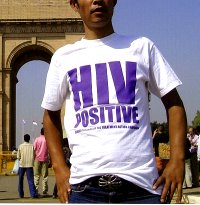
Le Guide de terminologie de l'ONUSIDA
est un instrument lingüistique visant à favoriser les droits et la dignité des individus.
Photos: UNAIDS
Par exemple, choisir des termes portant sur des comportements particuliers plutôt que sur l'appartenance à des groupes constitue une bonne approche pour éviter d'accroître la stigmatisation et la discrimination. Il est préférable de parler de 'risque accru d’exposition au VIH', de 'rapports sexuels sans préservatif', 'd’utilisation de matériel d'injection non stérile' plutôt que de généraliser en parlant de 'groupes à haut risque'. Etre membre d'un groupe n'expose pas en soi un individu à un risque d'infection, alors que son comportement le peut.
Respecter et responsabiliser les personnes sont deux autres principes à la base d’une recommandation de l'ONUSIDA qui conseille d'éviter des termes tels que 'victime du sida' ou 'personne souffrant du sida'. « Ces termes sous-entendent que l'individu est impuissant et n'a pas la maîtrise de son existence, » explique Alistair Craik, qui coordonne l'élaboration du Guide de terminologie de l'ONUSIDA. « Il est préférable d'utiliser 'personne vivant avec le VIH', » ajoute-t-il.
Parler de personnes vivant avec le VIH comme d'innocentes victimes (ce qui est fréquent lorsqu’il s’agit d’enfants séropositifs ou de personnes chez qui l’infection est due à un traitement médical) implique à tort que les infections acquises selon d’autres modes constituent en quelque sorte un châtiment mérité. Il est préférable d'utiliser systématiquement 'personnes vivant avec le VIH', ou 'enfants vivant avec le VIH'.
Le Guide de terminologie de l'ONUSIDA offre également aux rédacteurs des conseils permettant d'éviter certaines erreurs courantes. Par exemple, on ne devrait pas utiliser le terme 'virus du sida' qui est incorrect sur le plan scientifique. « Il n'existe pas de virus du sida, » explique Craik, « le sida, syndrome d'immunodéficience acquise, est un ensemble d'infections opportunistes et de maladies qui est la conséquence ultime de l'infection à VIH. C'est aussi pourquoi, » ajoute-t-il, « les personnes ne sont pas infectées par le sida mais par un virus appelé VIH. Les lettres 'VIH' signifient virus de l'immunodéficience humaine, il est donc faux de parler de 'virus VIH'," note Craik. De même, il est tautologique de parler de 'pratique du commerce du sexe' – les termes 'commerce du sexe ' ou 'vente de services sexuels' sont plus concis et précis.
Les exemples ci-dessus sont autant d'illustrations de ce que les rédacteurs trouveront dans le Guide de terminologie de l'ONUSIDA. Cette brève série de recommandations a pour but de promouvoir une terminologie sensible aux questions de genre, qui soit non discriminatoire et appropriée sur le plan culturel et qui favorise les droits humains universels. « Nous demandons aux lecteurs de comprendre que le Guide de terminologie de l'ONUSIDA est composé de recommandations et que des rédacteurs différents auront des voix diverses ; d’autres organisations auront des domaines de compétence différents et ils pourront choisir leurs propres préférences et leur propre style, et cela, c’est très bien, » conclut Craik.
L'ONUSIDA insiste sur le fait que ses recommandations terminologiques doivent être considérées comme un travail en cours qui sera adapté au fur et à mesure de l’apparition continue de nouvelles questions et de nouvelles dynamiques.
Liens:
Guide de terminologie de l'ONUSIDA (mars 2007)
Résumé des recommandations (mars 2007) en anglais
Related
 The First Fallen but We Will Overcome
The First Fallen but We Will Overcome

03 novembre 2022
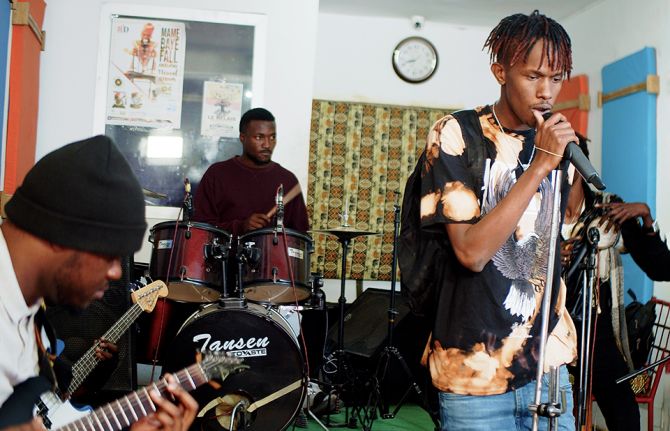 Popular and dedicated singer Samba Peuzzi calls for ending HIV infections among children
Popular and dedicated singer Samba Peuzzi calls for ending HIV infections among children

16 juin 2022
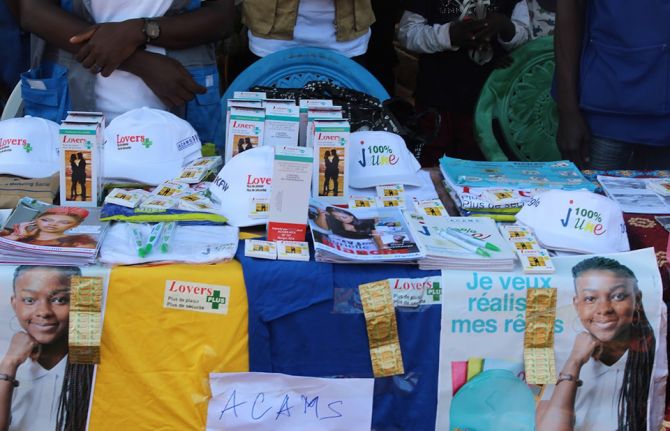 Commemorating World AIDS Day in the Central African Republic
Commemorating World AIDS Day in the Central African Republic
06 décembre 2021

Feature Story
UNAIDS in action 2006
22 décembre 2006
22 décembre 2006 22 décembre 20062006 has been an important year in the AIDS response. The number of people living with HIV rose to almost 40 million, the highest number ever, however declines in infection rates were observed in some countries, as well as positive trends in young people's sexual behaviours. HIV Prevention efforts were shown to be working in a number of countries, highlighting the need to urgently scale up, expand and adapt prevention programmes to address the different drivers of the epidemics.
Political commitment to the AIDS response was at its highest level to date which was reflected at the 2006 High Level Meeting on AIDS at the UN in New York. Heads of State and Government and representatives of States and Governments came together to debate key AIDS issues and unanimously adopted a political declaration on AIDS. During the meeting countries also pledged to set ambitious national targets for universal access to HIV prevention, treatment care and support. By the end of 2006 many countries had already set their targets.
In 2006, key developments were brought to light in the field of scientific research—including increased emphasis on microbicide development and findings relating to male circumcision. More people than ever before were receiving antiretroviral treatment and funds pledged for the AIDS response reached their highest levels to date.
2006 also marked 25 years since the virus was first discovered over which time some 25 million people have died of AIDS.
2006 was also the 10 th anniversary of the Joint United Nations Programme on HIV/AIDS (UNAIDS) during which time UNAIDS has spearheaded many innovative initiatives that have accelerated the AIDS response worldwide.
In 2006 , UNAIDS enlisted the help of a number of new special representatives to strengthen communication of key messages and reach out a broader audience than ever before.
Below are some of the highlights and key events which took place during 2006.
| JANUARY | |
| AIDS: everybody’s business | |
 |
Business leaders met in Davos in January for the 2006 World Economic Forum, many turned their attention to the issue of the increasing impact of AIDS in the workplace. |
| The road towards universal access | |
|
As requested by the General Assembly in resolution 60/224 adopted in December 2005, UNAIDS secretariat and co-sponsors started facilitating inclusive, country-driven processes to identify practical actions for scaling up AIDS services towards universal access. Thousands of people from all walks of life were mobilized to seize this extraordinary opportunity. Between January and March, more than 100 low- and middle-income countries held broad public debates about what needs to be done to turn back the epidemic. Seven regional consultations were held. The UNAIDS secretariat also convened a multipartner Global Steering Committee. |
|
| FEBRUARY | |
| The need to invest in HIV prevention | |
|
A study, published in Sciencexpress in February, indicated that increased spending on HIV prevention would not only prevent more than half the new infections that would occur from 2005 to 2015, but would actually produce a net financial saving as future costs for treatment and care are averted. |
|
| World not doing nearly enough to protect children affected by AIDS | |
|
In February, the Global Partners Forum, hosted by UNICEF and the UK Department for International Development, brought together 90 international organizations, NGOs and governments in a special effort to ramp up practical responses for children affected by the AIDS epidemic. |
|
| Innovative AIDS funding takes off | |
|
An international conference on “Solidarity and Globalization: innovative financing for development and against pandemics”, held in Paris in February, brought together representatives from more than one hundred countries, 18 international organizations and 60 NGOs to discuss the implementation of innovative financing for development. |
|
| AIDS mission to Rwanda to discuss next steps in AIDS response | |
|
In February, leading representatives from Luxemburg, the United Kingdom’s Department for International Development, UNICEF and the Joint United Nations Programme on HIV/AIDS visited Rwanda for a two-day, high-level mission to gain a joint perspective on the progress of the national AIDS response and the ongoing challenges it faces. |
|
| MARCH | |
| Economic security for women key to HIV prevention | |
| |
A new paper published in March by the UNAIDS-led Global Coalition on Women and AIDS showed that when women have an income and a safe place to live, they are much better able to negotiate abstinence, fidelity, and safer sex. Economic security, the paper stressed, is a major factor in enabling women to protect themselves from HIV. |
| Positive partnerships break down AIDS-discrimination in Thailand | |
| |
Heralded by UNAIDS as an example of ‘best practice’, a project that offers small loans to enable people living with HIV set up businesses is helping break down stigma and discrimination in Thailand. |
| Global access to HIV therapy tripled in past two years, but significant challenges remain | |
|
A new report by the World Health Organization (WHO) and the Joint United Nations Programme on HIV/AIDS (UNAIDS) shows that the number of people on HIV antiretroviral treatment (ART) in low- and middle-income countries more than tripled to 1.3 million in December 2005 from 400 000 in December 2003. Charting the final progress of the "3 by 5" strategy to expand access to HIV therapy in the developing world, the report also says that the lessons learned in the last two years provide a foundation for global efforts now underway to provide universal access to HIV treatment by 2010. |
|
| APRIL | |
| Declaration of Commitment on HIV/AIDS: five years later – Report of the Secretary General | |
|
The report of the Secretary-General provided an update on progress in the global AIDS response since the 2001 special session, identified critical challenges and made urgent recommendations to strengthen efforts at the global, regional and country levels. |
|
| UNAIDS assessment report on the road towards universal access released | |
|
Reaching the Millennium Development Goal on HIV and AIDS – to halt and reverse the spread of the epidemic by 2015 – requires far greater access to HIV prevention services and AIDS treatment, care and support than is currently available. The assessment report includes an analysis of common obstacles and recommendations for overcoming them by integrating HIV prevention, treatment, care and support with broader health and social services. |
|
| President Putin calls for urgent measures to stem the HIV epidemic in Russia | |
| |
President Vladimir Putin gathered the Presidium of the State Council to discuss the HIV epidemic in Russia. In a groundbreaking move, the State Council examined all aspects of the growing epidemic in the country and agreed on a set of measures that will strengthen Russia’s response to the epidemic in an unprecedented manner. |
| MAY | |
| Launch of the 2006 Report on the global AIDS epidemic | |
| |
On the eve of the 2006 High Level Meeting on AIDS in New York UNAIDS launched the 2006 Report on the global AIDS epidemic, featuring the latest AIDS estimates and new trends. The report, a special edition marking UNAIDS' 10th anniversary, contained the most in-depth data from countries to date, based on progress reports from 126 countries. |
| Eastern Europe and Central Asia are facing the challenge | |
| |
Under the theme “facing the challenge” the first Eastern European and Central Asian AIDS conference welcomed around 1500 participants in Moscow from 15 to 17 May. The conference provided an important forum for political leaders, scientists and researchers, people living with HIV and representatives from civil society to take stock of the AIDS response in the region. |
| JUNE | |
| Agenda for action on women and AIDS | |
|
On 1 June, the UNAIDS-led Global Coalition on Women and AIDS launched a new Agenda for Action - calling for massively scaled-up funding for AIDS programmes for women and girls; the effective enforcement of laws that affirm and protect women's rights, and greater involvement in women (particularly positive women) in forums where AIDS policies and programmes are decided. |
|
| 2006 High Level Meeting on AIDS | |
| |
High-level representatives of over 140 UN Member States, including nearly a dozen Heads of State and Government, met in June to review progress towards achieving the agreed goals of the Declaration of Commitment on HIV/AIDS adopted at the UN General Assembly Special Session on AIDS in 2001. The 2006 High Level Meeting on AIDS concluded with a renewed political commitment and agreement on future action to reverse the global AIDS epidemic and reduce its impact. |
| Gauging progress in Malawi | |
| |
Dr. Peter Piot, Executive Director of UNAIDS and Sir Suma Chakrabarti, Permanent Secretary, United Kingdom Department for International Development visited Malawi to review progress made in the country’s AIDS response. Malawi’s political leadership and commitment in accelerating universal access to HIV prevention, treatment care and support was one of the focal points of the visit. |
| JULY | |
| Investigating the impact of AIDS in Asia and the Pacific | |
|
A new body to study the spread and impact of HIV and AIDS in the Asia Pacific region was launched in July in New Delhi. The Independent Commission on AIDS in Asia and the Pacific consists of 10 leading economists, scientists, civil society representatives and policy-makers from across the region. |
|
| UN Secretary-General meets pharmaceutical companies to discuss access to treatment | |
| |
The UN Secretary-General met with CEOs from the world’s leading pharmaceutical companies and UN officials in New York to explore ways to expand access to HIV treatment and care in low-and-middle income countries. The meeting was the first of its kind to include both research and development - or ‘brand name’ – pharmaceutical companies, generic development companies and UN bodies. |
| Health leaders welcome infectious disease focus at G8 | |
| |
In advance of the G8 summit, the leaders of the four key health policy and financing organizations - the World Health Organization (WHO),UNAIDS, the Global Fund to Fight AIDS, Tuberculosis and Malaria, and the GAVI Alliance - jointly welcomed the focus on infectious diseases and urged the G8 leaders to continue their commitments to improving the health and lives of people in the world's poorest countries. |
| AUGUST | |
| UNAIDS Executive Director meets with Indian Prime Minister | |
|
Dr Peter Piot met with Indian Prime Minister Dr Manmohan Singh in August. The Prime Minister's leadership has put the AIDS response on the national political agenda. As the Chairperson of the National Council on AIDS, Dr. Singh has developed a multi-ministerial task force comprising of 31 ministries and seven state governments for a coordinated multi-sectoral response to the HIV epidemic in India. |
|
| XVI International AIDS Conference, Toronto, Canada | |
| |
Over the week 13-18 August, 24,000 people participated in the XVI International AIDS Conference, including high-profile guests such as former US President Bill Clinton, Bill and Melinda Gates, leaders from governments, the science sector, civil society, people living with HIV, youth and women’s groups, United Nations officials, business, the private sector and the entertainment sector. UNAIDS took part in a wide variety of satellites, sessions and events over the week. |
| Uniting for HIV Prevention | |
| |
UNAIDS, civil society, treatment activists, private sector and governments call for ‘out of the ordinary partnerships’ to intensify HIV prevention efforts. |
| SEPTEMBER | |
| Responding to AIDS in China | |
| |
UNAIDS Executive Director Peter Piot visited China in September to encourage continued leadership and commitment and to mobilize a multi-sectoral response to AIDS. |
| Emerging epidemics in Eastern Europe on the agenda | |
|
In September, UNAIDS Executive Director Dr Peter Piot visited Berlin to discuss ways of strengthening collaboration between UNAIDS and Germany and to promote continued commitment to the AIDS response. Dr Piot met with Government Ministers, parliamentary representatives, the National AIDS Council and NGO representatives. |
|
| OCTOBER | |
| Setting ambitious national targets: The next step on the road towards universal access | |
| |
In October, UNAIDS published new, operational guidelines to support countries’ efforts to set ambitious national targets that reflect international commitment to scale up significantly towards the goal of universal access to comprehensive prevention programmes, treatment, care and support by 2010. |
| NOVEMBER | |
| Asia Pacific: Call for action on AIDS | |
| |
Asia and Pacific countries with low HIV prevalence rates called for action to increase targeted HIV prevention efforts and funding for AIDS, at the ‘Low to Zero’ Asia Pacific regional conference on universal access to HIV prevention, treatment, care and support in low prevalence countries, that took place in Mongolia in October. |
| UN Secretary General visits UNAIDS, Geneva | |
| |
In one of his final public appearances as UN Secretary General, Kofi Annan visited UNAIDS in Geneva on Monday 20 November. The Secretary General urged the international community to continue to “fight to bring the global AIDS epidemic under control.” |
| UNAIDS/WHO launch 2006 AIDS epidemic update | |
| |
UNAIDS launched the new joint UNAIDS/WHO report, AIDS Epidemic Update 2006, featuring updated global and regional AIDS estimates and new trends in the epidemic’s evolution on 21 November 2006. |
| DECEMBER | |
| World AIDS Day 2006 | |
| |
With nearly 40 million people living with HIV in 2006, this year's World AIDS Day theme of 'accountability' was a poignant reminder that we all have a role to play in the AIDS response and we are all accountable for the promises we have made. On 1 December events took place around the globe to commemorate this special day of remembrance and hope. |
| Setting targets for universal access to HIV prevention, treatment, care and support | |
| |
Throughout 2006, countries across the world have been taking positive steps to accelerate their national response in order to halt and reverse the AIDS epidemic by 2015. By the end of 2006, a number of countries had already set ambitious national targets, while others, building the process into their existing national strategic planning cycle, are due to continue this process throughout the coming months. |
| Statement on trial findings regarding male circumcision and HIV | |
|
UNAIDS and its Cosponsors, WHO, UNFPA, UNICEF and the World Bank, release a joint statement regarding the announcement by the US National Institutes of Health that two trials assessing the impact of male circumcision on HIV risk are being stopped on the recommendation of the NIH Data Safety and Monitoring Board (DSMB). |
|
Related

Feature Story
2006 World AIDS Day events
21 décembre 2006
21 décembre 2006 21 décembre 2006To view the pictures from World Aids Day events you require the Flash Plugin Download it here.

World AIDS Day 2006 commemoration at UNAIDS/WHO
The World AIDS Day celebration at UNAIDS/WHO Headquarters in Geneva, was organized by the UN family, missions, NGO's, humanitarian organizations, people living with HIV and faith communities. The lighting and placing of red candles forming a ribbon and the signing of promises onto a commemorative ribbon were two of the activities that took place after the opening remarks by Dr. Peter Piot, Executive Director, UNAIDS and other special guests.

World AIDS Day 2006 commemoration in Nigeria
UNAIDS coordinated the UN support to the WAD ceremony, including exhibition stands with condom promotion and demonstration and drama performances. UNAIDS and UN staff also participated in the rally of PLHIV to the National Assembly and to the office of the Minister of the Federal Capital Territory.

World AIDS Day 2006 commemoration in South Africa
The UNAIDS Country Office in South Africa in partnership with Cricket South Africa uses sport as a platform for promotion of HIV Prevention. The pictures were taken during . UNAIDS and Cricket South Africa decided to use the Standard Bank International Pro20 Cricket Match between South Africa and India played in Johannesburg, South Africa on the 1st of December 2006 to commemorate World AIDS Day.
The Captain of the South Africa Cricket Team – Graeme Smith gave a speech on the impact of HIV in South Africa, the need to support people living with HIV, and the importance of knowing your HIV status.
Public Service Announcements (PSAs) from the World AIDS Campaign were also broadcasted during the match (as shown in pictures)

World AIDS Day 2006 commemoration in Panama
UNAIDS RST Office for Latin America in coordination with UNAIDS Panama carried out two visibility events for the commemoration of the WAD. One was carried out in the Miraflores Locks of the Panama Canal and the other at the Tocumen International Airport.

World AIDS Day 2006 commemoration in Papua New Guinea
The World AIDS Day was a symbolic event in Port Moresby used as a platform to promote HIV testing and counseling under the national theme “Stop AIDS: You have the right to know’. The national preparations for the 2006 World AIDS Day were facilitated by the civil society umbrella body PACSO (PNG Alliance of Civil Society Organization) which is supported by UNAIDS-PNG.
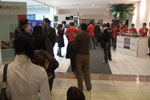
World AIDS Day 2006 commemoration in Macedonia
The World AIDS Day in Macedonia was organised jointly by UNAIDS, the Ministry of Health and local NGOs, and took place in a shopping Mall in its capital, Skopje. There were two info-educational stands where young people from local NGOs offered information on AIDS prevention and distributed booklets, condoms and red ribbons to all visitors, while mobile NGO teams circulated throughout the mall attracting people to write massages that were used to create a “Red message Ribbon”. During the WAD, a photographic exhibition on AIDS, consisting of 40 photographs made by young people, was also inaugurated.
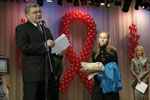
World AIDS Day 2006 commemoration in Belarus
UNAIDS supported the Belarusian Youth Festival of Universities “Stop AIDS. Keep the Promise” held in Minsk 1 December 2006. The Youth Festival was organized by all Universities within the National Plan of Actions on the World AIDS Day 2006. Every University contributed to the Festival with their projects on anti-stigma, health behavior and life skills. The Festival was opened by the Vice-Minister of the Ministry of Health.
Another WAD activity sponsored by UNAIDS was the “Leave Positively!” event organized by the NGO of PLHIV “Positive Movement”. The event scenario was centered around a concert where participants wrote messages to PLHIV. The exhibition of the Red Bells messages will start a tour among self-support groups of PLHIV all over Belarus.

World AIDS Day 2006 commemoration in Burundi
The commemoration of the World AIDS Day 2006 in Burundi extended to all 17 provinces of the country. The Burundi Alliance against AIDS (ABS), a network of 140 national associations, mobilized its members across the country to work closely with the provincial governments to organize World AIDS Day events and present their achievements from the past year. Delegations of high government representatives visited all provinces of the country, where communal ceremonies included parades, film screenings, photo exhibits, sports competitions and cultural performances. Delegates from networks of people living with HIV, the National Alliance against AIDS, and Women and Youth groups addressed local audiences. The President of the Republic launched the National Strategic Plan for 2007-2011.

World AIDS Day 2006 commemoration in Lesotho
The World AIDS Day commemoration in Lesotho was marked by the support of King Letsie III to the national plans to address AIDS in the country. The King also launched the first ever "Know Your Status" campaign during the World AIDS Day commemorations .
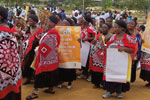
World AIDS Day 2006 commemoration in Swaziland
The UNAIDS Country Office in Swaziland in partnership with the Swaziland Government, the national AIDS coordinating body, as well as several national and international NGOs working in Swaziland commemorated World AIDS Day with a Ten Day Campaign leading up to the climax day on December 1st. During the campaign offices across the country displayed candles with the red ribbon and promises boxes where people were encouraged to make a pledge and keep the promise. On December 1st a march and run were held to commemorate World AIDS Day 2006. The event also featured songs by the traditional women’s regiment (Lutsango), dramas and songs by school children, music, and dance all focused on HIV. There were also information booths by NGOs working on HIV in the country, and mobile testing units in line with the focus on HIV Prevention.

World AIDS Day 2006 commemoration in Thailand
UN agencies and civil society organisations teamed up to organise a World AIDS Day event led by UNESCO and Thai Red Cross. The event, which took place at Lumpini Park and Thai Red Cross Compound in Bangkok on the 1st of December 2006 was billed as the “Condom Chain of Life Festival” and included setting a new Guinness Book of Records mark for the world’s longest chain of condoms intended to raise awareness around HIV prevention. The World AIDS Day commemoration included a parade organized by the Thai Red Cross involving HRH Princess Somsawalee, games, activities and performances around AIDS issues. Tents and pavilions were organized by UN agencies and NGOs working on HIV related issues to disseminate information.
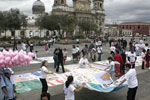
World AIDS Day 2006 commemoration in Guatemala
To commmemorate The International World AIDS Day 2006, El Día Mundial en la lucha contra el SIDA, the activity of Quilts in the Central Park, in front of Palacio Nacional de la Cultura, Guatemala City, Guatemala, C.A.
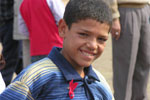
World AIDS Day 2006 commemoration in Egypt
As part of the Sailing the Nile for the Millenium Development Goals (MDGs) project, initiated by the UN and its partners, eight felucca boats, each representing a Goal, sail the Nile to promote action to fulfill the MDGs in Egypt. On December 1st, the boats stopped in Beni-Suef to promote the 6th MDG, that aims to combat HIV, malaria and other diseases, and to commemorate World AIDS Day. The organised events included HIV education training-of-trainers sessions with youth and the promotion of volunteerism; workshops with religious leaders to spread AIDS awareness messages; and welcome the feluccas with a parade, display of banners, song and dance performances. In addition to the activities planned in Beni-Suef, AIDS awareness campaigns were orchestrated by local organizations in Cairo, Sohag, Qena, Luxor, Aswan, and Assiut, with events ranging from awareness-raising and training-of-trainers to competitive sports and dramatic performances.
Related

Feature Story
A faith-based response to HIV in southern Africa
20 décembre 2006
20 décembre 2006 20 décembre 2006Nazareth House, a faith-based organization located in Cape Town, was the first Catholic orphan care institution in South Africa to provide paediatric antiretroviral therapy for the HIV-positive orphans it cares for.
The Sisters of Nazareth House are currently caring for 35 children made orphans by AIDS and 20 adults living with HIV, most of whom, due to the complexity or severity of their symptoms can no longer care for themselves or be cared for by their family or community.

Photo credits : UNAIDS/L. Alyanak
Like Nazareth House, many faith-based initiatives have been on the front-line of the epidemic since its devastating effects on the population became apparent in Africa. Nowadays, faith-based organizations, which often reach the most remote communities, as well as being prominent in large urban centres, are uniquely placed to provide a range of quality HIV-related services (from training of home-based caregivers to provision of antiretroviral therapy) to those in need.
However, the valuable work of organizations within the Catholic Church based upon their religious principles sometimes lacked the coordination and level of support needed to improve the effectiveness of their responses to the AIDS epidemic.
It was under these circumstances that the Southern African Catholic Bishops’ Conference (SACBC), in partnership with the Catholic Medical Mission Board, launched the Choose to Care initiative. The initiative, supported by funding from the Bristol-Meyers Squibb Foundation and other sources, started in 2000 as a coordinated response to the overwhelming need to provide HIV-prevention education, care and support to communities in the southern African region.
“Since 2000 the SACBC AIDS Office has coordinated the response of the Catholic Church to AIDS in South Africa, Swaziland and Botswana, strengthening and building on existing programmes, as well as helping to initiate new ones. The continuum of Choose to Care in most of the programmes and projects linked to the SACBC has seen commitment to prevention, care and support to people infected and affected by AIDS,” stated Mr. Johan Viljoen, Programme Manger of Choose to Care Project.
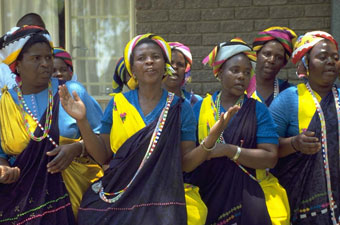
Photo credits : UNAIDS/L. Gubb
At first the Choose to Care projects were engaged in providing prevention and care services. However, the provision of treatment to those living with HIV, particularly orphans and vulnerable children, has become one of their main activities. The sites supported by the SACBC providing antiretroviral therapy aim at complementing government programmes in areas where government-funded antiretroviral therapy is not available, notably in resource-poor communities.
Nazareth House was one of the first sites where antiretroviral therapy was provided as part of the Choose to Care initiative. By replicating similar small-scale programmes implemented through the diocesan and parish system, the Catholic Church has been able to scale-up HIV programmes that remain rooted in and responsive to the needs of local communities.
This approach has been proven to be effective as is shown in a study recently researched and written by Rev. Robert J. Vitillo, Special Adviser on HIV for Caritas Internationalis. The study has now been published as part of the UNAIDS Best Practice Collection as an example of how a coordinated response to the epidemic made by a faith-based organization has increased HIV prevention education, care and support to communities affected by AIDS as well as complementing governments’ efforts to achieve universal access to prevention, treatment, care and support.
“The highly variable nature of the epidemic has been met with a wide variety of Best Practice responses. The Choose to Care initiative is especially interesting as it provides evidence that a large scale response to HIV may be achieved through support, coordination and guidance given to a large number of locally-rooted small-scale programmes,” noted Alistair Craik, Best Practice Manager, UNAIDS.
Drawing upon independent research the study shows that the Choose to Care projects are valued both for their compassion and practical effectiveness. Further proof of the strength and effectiveness of the Choose to Care model is provided by the fact that since 2005 when, as planned, funding support ceased, the great majority of projects have continued, sustained by new sources of support.
Related

Feature Story
Joint UNAIDS / DFID delegation visit to India
19 décembre 2006
19 décembre 2006 19 décembre 2006AIDS leaders from the United Kingdom and the Joint United Nations Programme on HIV/AIDS (UNAIDS) came together in India for a joint mission to gain greater insight into the country’s AIDS response. During the four-day visit, Sir Suma Chakrabarti, Permanent Secretary at the Department for International Development (DFID) and Dr Peter Piot, Xecutive Director of UNAIDS met with political leaders, senior government officials and parliamentarians, students, representatives from non governmental organizations and from the donor community.
As part of the mission, the delegation visited Patna in the North Indian state of Bihar on Saturday 16 December where Dr Piot and Sir Chakrabarti noted the significant progress made in this province since their last visit, including the establishment of India’s first ‘Legislative Forum on HIV and AIDS’ to raise AIDS awareness among policy makers in the state and to build capacity to address the challenges posed by AIDS.
|
|
Dr. Peter Piot, Executive Director, |
|
Mr. Nitish Kumar, Chief Minister of Bihar |
|
Dr.Peter Piot. Executive Director, UNAIDS addressing the gathering of Elected People’s Representatives in the State Capital of Patna on 16th December 2006 |
|
Sir Suma Chakrabarthi, Parmanent Secretary of the Department for International Development (DFID) addressing the gathering |
|
Heads of the Joint Mission Dr. Peter Piot, Executive Director, UNAIDS and Sir Suma Chakrabarti, Parmanent Secretary of the Department for International Development (DFID) greeting His Excellency R.S.Gavai, the Governor of Bihar State and the Chancellor of Patna University with the Speaker of Bihar Legislative Assembly, Mr. Uday Narain Chowdhury during the interactive session with students at the Wheeler Senate Hall, Patna University, Patna on 16th December 2006. |
|
A cross section of the gathering at |
In New Delhi, the joint delegation met with political leaders and senior officials including the Indian Minister of Health and Family Welfare, Dr. Anbumani Ramadoss, the Indian Minister of Finance, P. Chidambaram and Sitaram Yechury, Polit Bureau Member of the Communist Party of India.
|
Dr. Peter Piot, Executive Director UNAIDS and Sir Suma Chakrabarti, Parmanent Secretary of the Department for International Development (DFID) during their meeting with Dr. Anbumani Ramadoss, Indian Minister of Health & Family Welfare in New Delhi, India on Monday 18 December 2006 |
|
Dr. Anbumani Ramadoss, Indian Minister of Health & Family Welfare with Dr. Peter |
|
Dr. Peter Piot, Executive Director UNAIDS and Sir Suma Chakrabarti Parmanent Secretary of the Department for International Development (DFID) meet with Sitaram Yechury, Polit Bureau Member of the Comunist Party of India |
|
From left to right Indian Minister of |
|
Dr. Peter Piot, Executive Director UNAIDS and Sir Suma Chakrabarti, Parmanent Secretary of the Department for International Development (DFID)exchange notes after meeting with Indian Finance Minister P. Chidambaram outside his office at North Block in New Delhi, India on Monday 18 December 2006. |
Photo credit for New Delhi : S. Sharma
Related
 Thailand’s Mplus: HIV services delivered in style
Thailand’s Mplus: HIV services delivered in style

13 décembre 2022
 Preventing transmission and tackling stigma: The power of U=U
Preventing transmission and tackling stigma: The power of U=U

12 décembre 2022

Feature Story
Local initiatives push for change in India
18 décembre 2006
18 décembre 2006 18 décembre 2006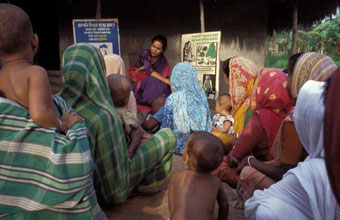
Photo credits : UNAIDS/M. Jensen
Political leaders in the north Indian State of Bihar were urged to rapidly scale up HIV awareness, prevention, care and support by AIDS leaders from the United Kingdom and the Joint United Nations Programme on HIV/AIDS (UNAIDS) during a special joint delegation visit on Saturday 16 December. At the same time, the delegation commended the commitment in the State to achieving these aims.
On a one-day visit to Bihar at the invitation of the State Government of Bihar, Sir Suma Chakrabarti, Permanent Secretary, Department for International Development (DFID) of the United Kingdom and Dr Peter Piot, Executive Director of UNAIDS, met with key political figures and visited the University. The joint delegation commended the political leaders’ resolve to fight AIDS and called for sustained political commitment, greater support from development partners and continued participation of elected representatives in strengthening a decentralized response to the HIV epidemic.
The joint mission was an opportunity to explore how local responses to the AIDS epidemic can be supported and strengthened through initiatives that are locally sensitive and aligned with commitments made at the global level.
In July 2006, Bihar became the first north Indian state to establish a legislative forum with a formal constitution and institutional mechanism for elected representatives to address AIDS issues in the State. The “Bihar Legislative Forum on HIV and AIDS” was launched as a way to raise awareness among political leaders in the State at all levels and to support a stronger capacity of all sectors to address the challenges posed by AIDS.
Since the inception of the forum, Bihar leaders have been advocating this approach with their political peers. Six other states in the northern region of India have now committed themselves to replicate the Bihar model. However, it was emphasized that leaders’ commitment is only one of the steps for a successful AIDS response.
In his speech at the Bihar Legislative Assembly, Dr. Peter Piot indicated that the state had to face “the challenge of strong leadership, management and coordination of all AIDS activities and the challenge of reaching ALL of Bihar’s people to effectively prevent and treat HIV infection.”
Sir Suma Chakrabarti emphasized that “action is needed to spread accurate messages so that people, especially women, can protect themselves. Action is also urgently needed to tackle stigma and discrimination faced by people living with HIV.”
As part of the visit, the joint delegation met representatives of the government, the legislature, civil society, United Nations staff and donor agencies to explore ways to improve the coordination of resources for AIDS control at all levels. The delegation recommended that the technical and financial resources of development partners be pooled to ensure that the Bihar AIDS response keeps pace with the evolving nature of the epidemic, and to ensure that technical and financial support is in line with the needs of the State AIDS Control Society to reach all high risk groups. “The State AIDS Control Society should regularly inform you, the people’s representatives, on the progress of the HIV control programme in Bihar,” argued Dr. Peter Piot, in speaking to the Bihar Legislative Forum.
Although Bihar’s HIV prevalence rate is lower than the national HIV prevalence rate of 0.9%, the social drivers of the epidemic make it particularly vulnerable. One in six people are migrating to urban centres in search of work and a better standard of living. Wide-spread stigma and misconceptions are causing marginalization and exclusion. The state’s vulnerabilities are compounded with a backdrop of increasing levels of sex work and low levels of condom use.
During the visit to Bihar, the joint delegation emphasized the need for a muti-sectoral response, including HIV prevention, treatment, care and support. Nothing less than such a comprehensive response can ensure that all people living with HIV and all those people at high risk of infection have access to vital HIV services. DFID and UNAIDS underlined their support to Bihar in its continuous efforts to control the AIDS epidemic.
The one-day visit to Bihar was part of a wider joint DFID / UNAIDS mission to India in which Dr Piot and Sir Chackrabarti will also meet with political leaders, senior government officials and parliamentarians, students and representatives from non governmental organizations and from the donor community in Delhi.

